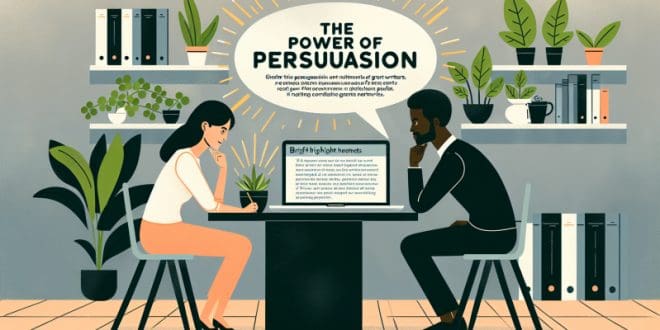In the bustling ecosystem of grants and donations, the race to secure funding is more challenging than ever. Organizations and individuals alike are vying for the attention of donors and grantmakers who sift through countless proposals, each clamoring for the spotlight. What then, can make your application shine in this competitive arena? The answer lies in the power of persuasion through storytelling.
The art of storytelling is not a mere embellishment for grant proposals; it’s a strategic tool that can propel a good proposal into the realm of greatness. For non-profit professionals, understanding the mechanics of crafting compelling narratives is essential for capturing interest and, ultimately, securing funding.
Why Narrative Matters in Grant Proposals:
Narratives have the power to humanize data, putting a face to the numbers and breathing life into statistics. This emotive force is what transforms a dry document into a persuasive, memorable argument for support. A well-told story appeals to the heart as much as it does to the mind, creating a connective tissue between the proposal’s objectives and the funder’s mission.
Elements of a Gripping Narrative:
A gripping narrative begins with understanding the audience – the funders. To captivate them, a proposal must showcase relevance, urgency, and the potential impact in a manner that aligns with the funder’s priorities. Here are some key elements to consider:
1. Opening with Impact**: Just like any story, the opening of your grant narrative should hook the reader. Begin with an evocative statement or a succinct anecdote that sets the stage for the journey ahead.
2. Creating Context**: Quickly establish the ‘why’ behind your proposal. What’s the social, economic, or environmental issue you’re addressing? Why should the funder care?
3. Presenting the Protagonist**: In grant narratives, the protagonist is often the community or population served. Illustrate their challenges and aspirations vividly to foster empathy in the reader’s mind.
4. Plotting the Path**: Clearly articulate how your proposed solution will lead to change. This roadmap should span from the current status quo to the envisaged outcome, detailing the steps and resources required.
5. Data as a Storyteller**: While storytelling is key, robust data and evidence lend credibility to your narrative. Incorporate statistics and research findings seamlessly into your story to strengthen your argument.
Dissecting Successful Grant Narratives:
To truly grasp the art of persuasive storytelling in grant proposals, analyzing successful examples is invaluable. These narratives showcase a symbiotic relationship between narrative and the funder’s vision, highlighting the shared journey towards a common goal. They strike a balance between emotional appeal and factual rigor, providing a comprehensive yet compelling case for support.
Non-profit professionals can learn from these narratives by observing the strategic placement of emotive elements and the integration of data to underline the narrative’s urgency and importance.
Balancing Emotional Appeal with Factual Rigor:
While emotional appeal is a potent persuasive force, it must be balanced with factual rigor. Excessive sentimentality can undermine the proposal’s credibility. Non-profit professionals must weave their story with a thread of authenticity, ensuring that every claim is substantiated, and every statistic serves the narrative’s progression.
Authenticity and Persuasion:
Ultimately, the most persuasive narratives are those that are authentic and sincere. They reflect a genuine understanding of the cause and convey a palpable passion that resonates with funders. Authenticity builds trust, and trust is the foundation upon which support is granted.
In conclusion, by employing strategic storytelling techniques, non-profit professionals can elevate their grant proposals above the clamor of competition. The power of persuasion rests in the ability to tell a compelling narrative, one that leads the funder on a journey that is impossible to forget – and even harder to dismiss.
 Grants Club Community
Grants Club Community







